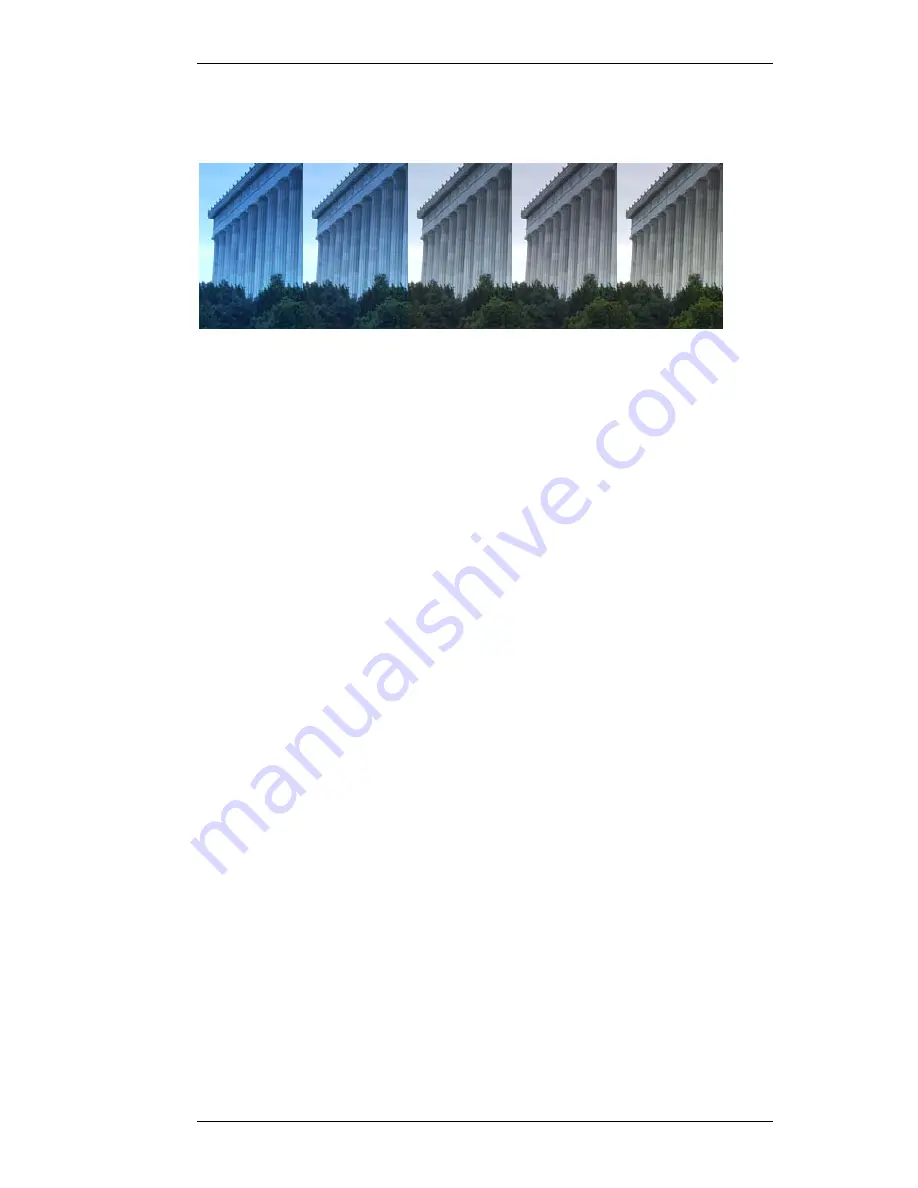
V1.02
Thom Hogan’s Complete Guide to the Nikon D300
Page 317
front—we’ll be coming back to those in a moment). Let’s look
at a number of options for white balance:
From left to right: 3400K, 3800K, 4400K, 4800K, and 5200K. I’ve
added just a bit of color saturation to emphasize the cast. All
photos taken at the same camera settings and processed through
Nikon Capture the same.
You should notice in the above examples that as the color
temperature on the camera is set lower than the actual value
present in the lighting, a blue cast appears in the photo. (That
again brings up Nikon’s choice of 5200K for Daylight—most
of the time you’ll find that it generates results that are slightly
on the blue side).
The further we get from the actual color temperature, the
more distinct that cast is. Note, too, that the cast applies to
everything: sky, building, and bushes. It isn’t until you get
5200K that we begin to see some of the warmth that is in the
limestone and sky, and it isn’t until we get over 5500K that
the greens actually become fully green (no hint of blueness;
compare the larger photo with the rightmost small one and
look at the greens).
Remember those orange spots on the walls of the Memorial?
Those are areas lit by incandescent light, which has a lower
color temperature than daylight. Inside the Monument,
Lincoln’s bust is mostly lit by incandescent lighting. Here’s
another full photo to consider:






























